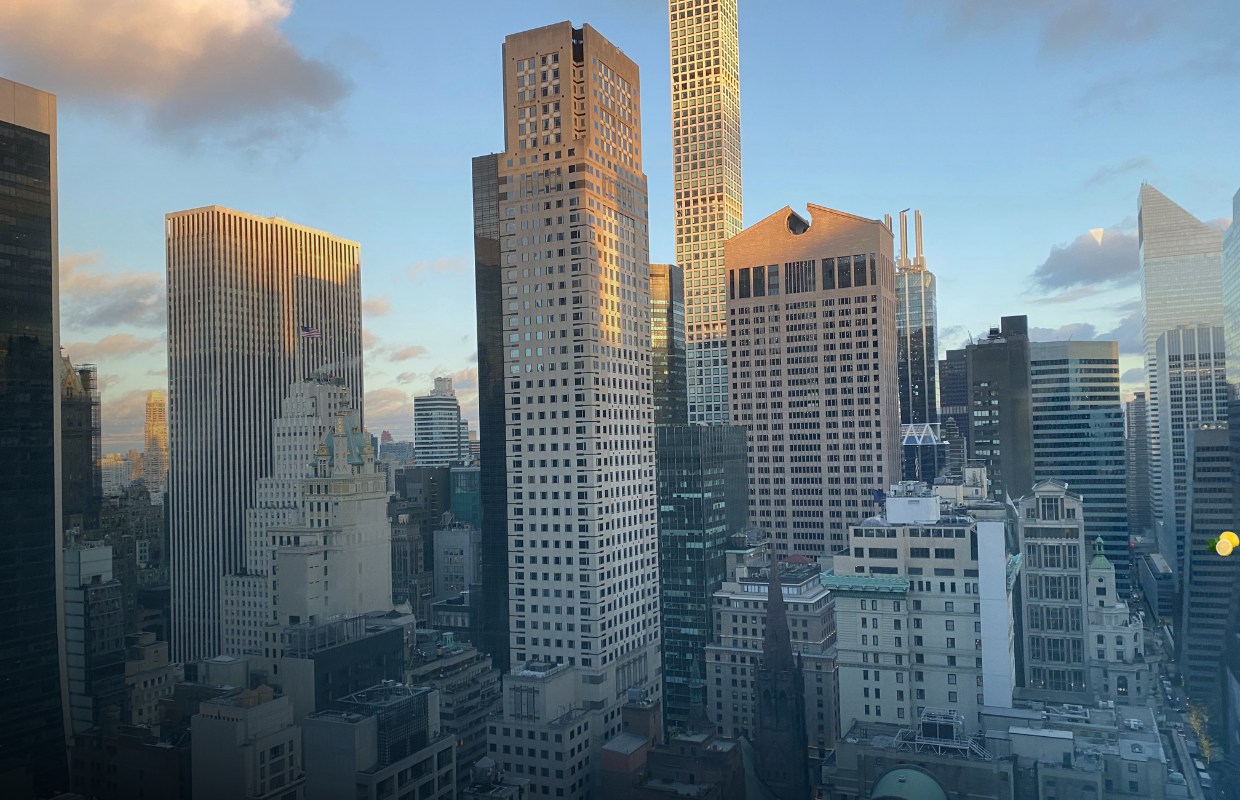Industry Trends
•
September 2023
September 2022
Complying with the NYC Climate Mobilization Act (Local Law 97) with IOT Sensor Technology
One of the most urgent concerns today is the climate change caused by global warming. The operation and maintenance of buildings are the most significant contributor to carbon emissions across the globe. Global greenhouse gas emissions from buildings contribute 39% of this amount annually. Of those emissions, 28% originate from existing buildings, and11% result from construction.
Buildings add pollutants to the environment in various forms. For example, 1.5 trillion bricks are produced yearly for construction materials. Buildings use energy to meet power requirements. In addition, hydrofluorocarbons (HFCs) from refrigeration and air conditioning also contribute to global warming.1
Urbanization caused by population increases has resulted in the need for more buildings to be constructed and maintained.According to Architecture2030.org, New York City (NYC) has over one million buildings covering 5.75 billion square feet, and 70% of NYC's greenhouse gas emissions originate from these structures.
What is the Climate Mobilization Act?
In 2019 NYC decided to do something about it - the Climate Mobilization Act, also known as Local Law 97. The Climate Mobilization Act impacts 60% of New York's buildings (about 50,000), spanning residential and commercial properties. 2
Local Law 97 consists of:
- The requirement for most buildings 25,000 square feet or larger to reduce their carbon emissions by 40% by 2030 and by 80% by 2050
- Building owners who aren't compliant will be fined $268 per metric ton if their carbon footprint exceeds the limit annually.
- Greenhouse gas includes carbon dioxide, methane, nitrous oxide, hydrofluorocarbons, per-fluorocarbons, sulfur hexafluoride, and nitrogen trifluoride.
- There will be building emissions assessments conducted annually 3
The Climate Mobilization Act is unique because it targets current buildings and requires owners to invest in renovation and retrofitting to make their buildings more energy-efficient. They have called the law "one of the most ambitious climate legislations for buildings enacted by any city in the world." 4
Compliance Requirements and Penalties
From May 2025 (reporting for 2024), buildings must record and provide their annual energy data and water consumption.
Failure to comply will result insubstantial financial penalties and add to the longer-term environmental consequences of increasing carbon emissions.
Building Automation and Video Management Systems
A building can add intelligent analytics and data-collecting sensors integrated with its Video Management System (VMS) to monitor its environment. Sensor technology combined with a VMS or building management software can provide a complete overview of building operations. Collecting energy, emissions, and resource use data can prevent policy violations. 5
Smart IoT sensors ( Halo Smart Sensor )can detect poor air quality, carbon dioxide, and nitrous oxide and help determine building emissions. In addition, the IoT sensor can provide actionable intelligence to the building's software system (Ganz CORTROL Global VMS ),which initiates pre-programmed mitigation or corrective actions.
For example, video analytics or an IoT sensor may reveal that AC constantly runs in an empty conference room long after everyone has left. By integrating with CORTROL Global's intelligent Event and Action Manager, this event then triggers pre-programmed data-driven decisions (e.g., the AC is controlled). To learn more about Ganz CORTROL Global VMS, go to https://ganzsecurity.com/cortrol.
CBC's Commitment to the Environment
CBC recognizes that conserving the global environment is crucial for the planet's future and stands behind the UN's SDG goals. Environmental conservation is vital to CBC in its worldwide business activities. As a result, we follow and implement proactive environmental policies. Learn more here.
Sources
- https://architecture2030.org/achieving-80x50-nyc/
- https://www.urbangreencouncil.org/content/projects/all-about-local-law-97
- https://commercialobserver.com/2020/11/local-law-97-new-york-what-to-know/
- https://nypost.com/2020/01/16/nyc-buildings-prepare-to-drastically-reduce-emissions-to-avoid-penalties/
- https://www.iotforall.com/could-sensor-technology-be-the-answer-to-nyc-climate-mobilization-act-targets




